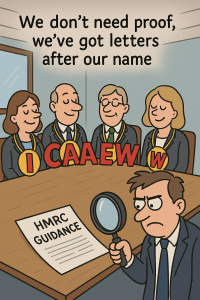When most people think of security clearance in Britain, their mind probably jumps to James Bond, tuxedo immaculate, licence to kill in one pocket and a martini in the other.
Ian Fleming, creator of Bond, worked in Naval Intelligence during the Second World War and was heavily involved in operations that required absolute secrecy. His experiences provided the inspiration for the world’s most famous fictional spy, though those who undergo modern vetting are more likely to face a long interview than a baccarat table.
The reality of security vetting is sadly less glamorous and is more about paperwork than casinos and martinis, but the connection is not so far-fetched. In the United Kingdom the system of national security vetting is designed to ensure that people working in sensitive roles can be trusted with classified information and assets. Vetting is overseen by the United Kingdom Security Vetting (UKSV) service.
The options are:
Baseline Personnel Security Standard (BPSS)
This is the entry level check and not a formal security clearance. It involves verification of identity, employment history, nationality and immigration status, and criminal record. It is required for individuals who will have access to government assets, people or information but not at classified level.
Security Check (SC)
This is the most common type of clearance. It allows access to SECRET information and occasional access to TOP SECRET. The process involves a detailed check of criminal records, credit history, security service records, and personal references. Individuals in defence, security, and certain government posts often require SC clearance.
Developed Vetting (DV)
This is the highest level of security clearance in the UK. It is required for those who will have frequent and uncontrolled access to TOP SECRET information or who work in highly sensitive projects where compromise would have the most serious consequences for national security. DV involves extensive checks on personal life, finances, family background, travel, and relationships, usually including a long interview process. It is reviewed periodically to ensure ongoing suitability.
Enhanced Developed Vetting (eDV)
This is a more specialised form of DV used in certain intelligence roles. It is not commonly required outside the intelligence community and goes into even greater depth. Officially DV is considered the top level of vetting, with eDV being a rare extension.
Across the pond in the United States, the clearance system is structured differently, but serves the same purpose of protecting classified information and ensuring the reliability of personnel with access to it. These are the main types:
Confidential
This is the lowest level of clearance. It applies to information that could cause damage to national security if disclosed without authorisation. Investigations typically include checks on employment, education, criminal records, and credit history.
Secret
This level applies to information that could cause serious damage to national security if disclosed. It requires a more detailed investigation, usually covering the last ten years of an applicant’s history.
Top Secret
This is the highest standard clearance level in the United States. It applies to information that could cause exceptionally grave damage to national security if disclosed. The vetting process includes comprehensive background checks, interviews with associates, and an evaluation of financial, personal, and travel history. Holders of Top Secret clearance are subject to periodic reinvestigation.
Sensitive Compartmented Information (SCI) and Special Access Programs (SAP)
These are not separate clearance levels but additional access requirements placed on top of Top Secret. SCI refers to intelligence information that is divided into compartments, while SAP involves access to particularly sensitive projects. Both require the individual to already hold Top Secret clearance and to undergo further checks.
The layers of vetting in both the UK and the US may not offer the glamour of Fleming’s Bond, but they exist for the same reason he dreamt up MI6’s most famous agent: to protect nations, keep secrets safe, and ensure that only the most trustworthy individuals step into the inner circle.
Photo by Markus Winkler



